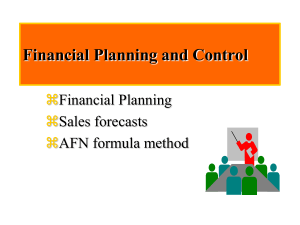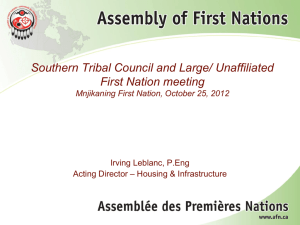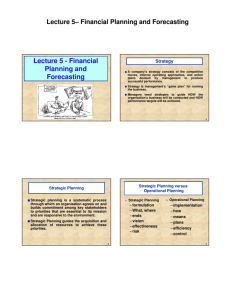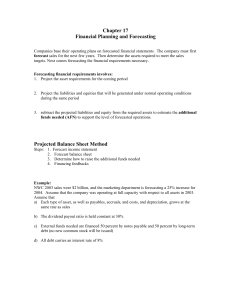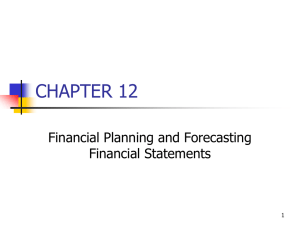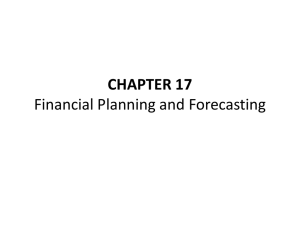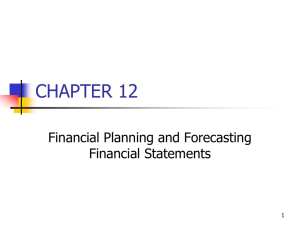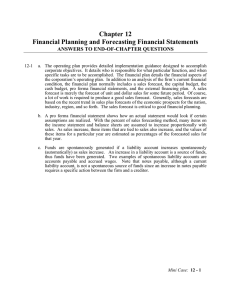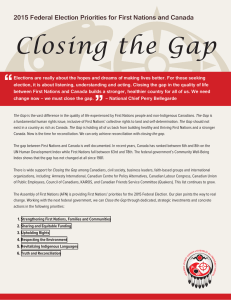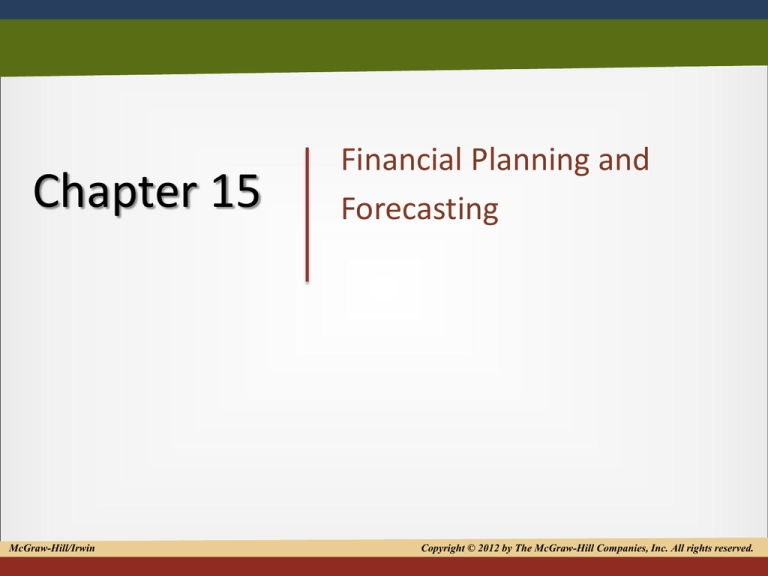
Chapter 15
McGraw-Hill/Irwin
Financial Planning and
Forecasting
Copyright © 2012 by The McGraw-Hill Companies, Inc. All rights reserved.
1
Financial Planning
• Strategic planning for a firm
– Formulating, implementing, and evaluating crossfunctional decisions to achieve long-term
objectives
15-2
Financial Planning
• Firm’s financial plan
– Base case is underlying set of assumptions
– Base case projections
• Set internal goals
• Provide information to shareholders and external
stakeholders
15-3
Forecasting Sales
• Naïve approach
– Assume future period’s sales will be equal to last
observed period
15-4
Target Historic Sales vs. Average Annual
Sales 2006 and 2007 – Conclusion?
15-5
Forecasting Sales
• Need to examine how much error exists in
using the naïve approach
• Measure forecast error with Mean Absolute
Percentage Error (MAPE)
15-6
MAPE Approach
• Measures efficiency of forecasting technique
– Uses one set of historic data to forecast a later set
of “testing data”
15-7
MAPE Approach
Calculated across n forecasts of a testing period
15-8
Average Approach
• Better than naïve approach
• Uses larger sample
• Takes mean of multiple historic observations
15-9
Average Approach
• Average approach reduces MAPE compared to
naïve forecasts
15-10
Estimating Sales with
Systematic Variations
• Accurate future sales predictions must make
adjustments for strong patterns
• De-seasonalize
– divide each month’s actual sales by the seasonal
index
15-11
External Financing
• Simple approach: Additional Funds Needed
(AFN)
15-12
Additional Funds Needed (AFN)
Capital intensity ratio
– Divide amount of assets tied to sales by amount of
current sales
– Multiply capital intensity ratio by projected sales
delta
15-13
Necessary Increase in Assets
Calculation
15-14
Additional Funds Needed
• Spontaneous liabilities ratio
– Divide the amount of liabilities tied directly to
sales by amount of current sales
– Multiply by the Retention Ratio (RR) to get
projected increase in retained earnings
15-15
Spontaneous Increase in
Liabilities Calculation
15-16
AFN with Unused Capacity Assets
• Firms often do not fully use fixed assets
• Unused capacity can support increases in sales
15-17
AFN with “Lumpy” Assets
• Fixed assets are not infinitely divisible
• Fixed assets are bought in discrete, nondivisible, integer-based quantities
15-18
AFN Using Pro Forma Statements
• Identify and compute balance sheet and
income statements items that change
• Adjust amounts for change in sales impact
15-19
AFN Using Pro Forma Statements
• Strategize changing items that do not vary
proportionally with sales
• Solve for variable that allows the balance
sheet to balance
15-20

